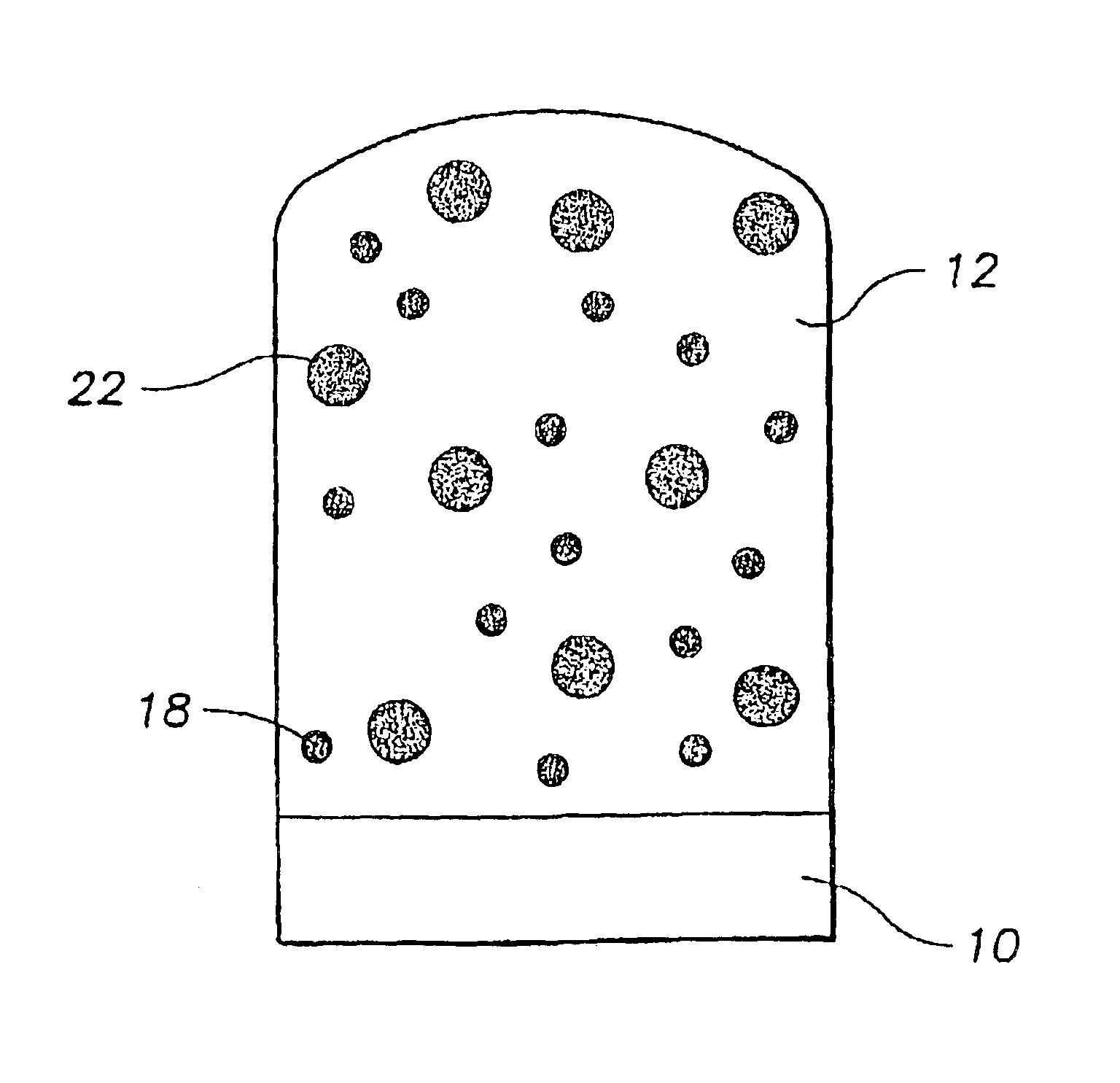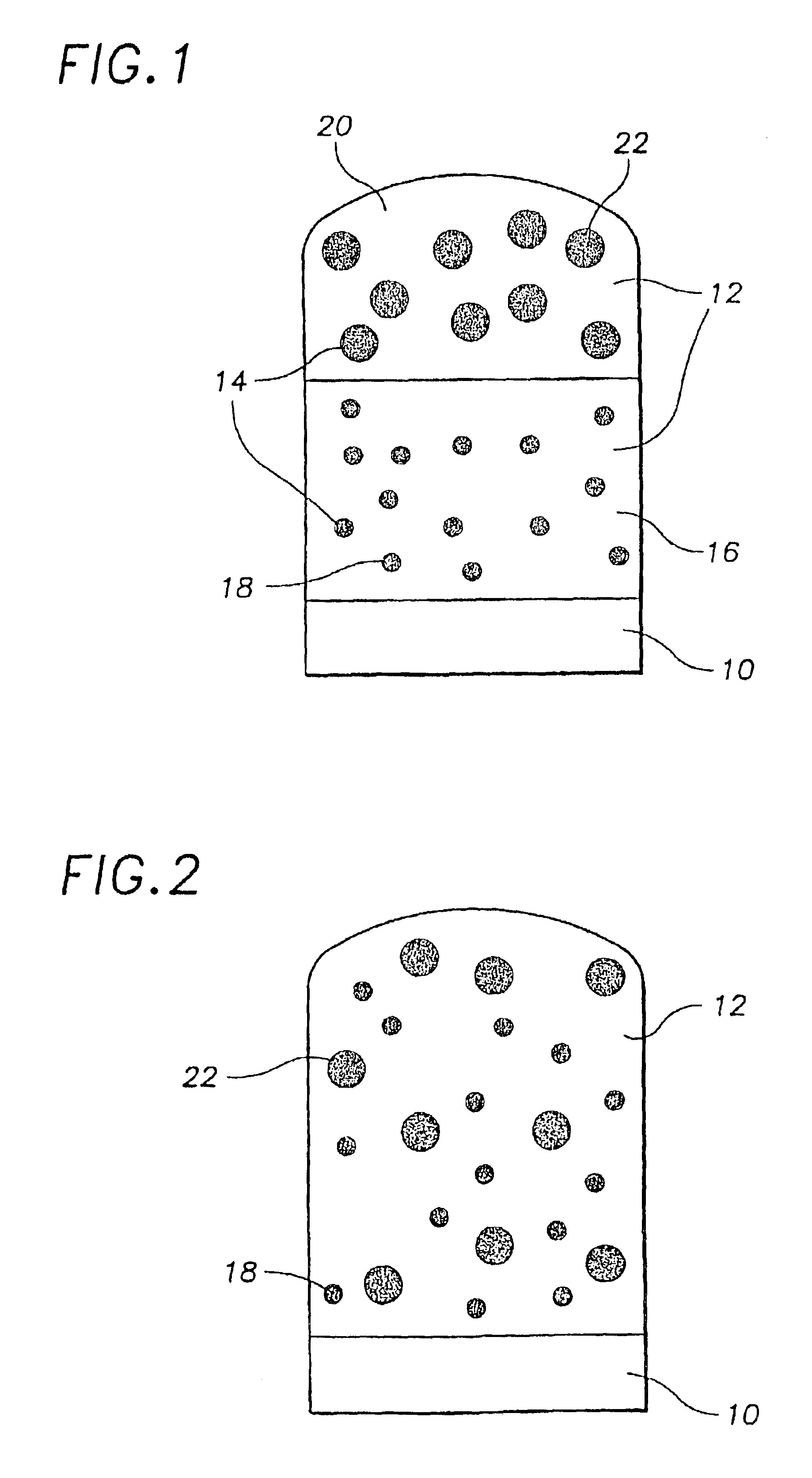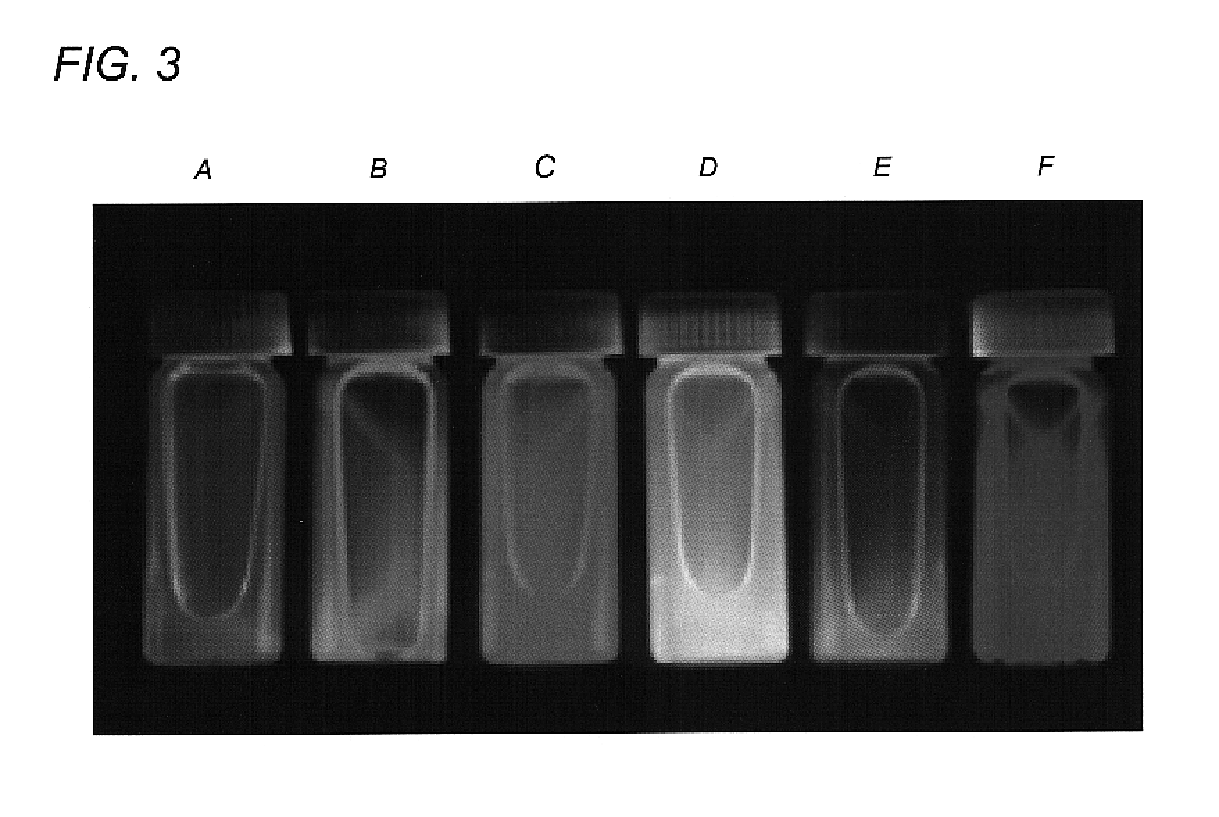Quantum dot white and colored light emitting diodes
a light-emitting diode and quantum dots technology, applied in the field of quantum dots in light-emitting diodes, can solve the problems of poor color control, difficult to produce leds even of a particular desired “pure” single-frequency color, and inability to emit white light, etc., to achieve excellent brightness and color control, good mixing of dots, and manufacturing flexibility
- Summary
- Abstract
- Description
- Claims
- Application Information
AI Technical Summary
Benefits of technology
Problems solved by technology
Method used
Image
Examples
example 1
Quantum Dots in Polystyrene
[0045]A green LED has been constructed according to the principles of the invention described above. The quantum dots used to construct this diode were composed of a CdSe core and a ZnS shell. The absorption and luminescence properties of the quantum dots were primarily determined by the size of the CdSe core. The ZnS shell acted to confine electrons and holes in the core and to electronically and chemically passivate the quantum dot surface. Both the core and shell were synthesized using wet chemistry techniques involving formation of CdSe or ZnS from precursors added to a hot organic liquid.
CdSe Core Synthesis
[0046]16 mL of trioctylphosphine (TOP), 4 mL of 1 M trioctylphosphine selenide (TOPSe) in TOP, and 0.2 mL dimethylcadmium were mixed in an inert atmosphere (nitrogen filled glovebox). 30 g of trioctylphosphine oxide (TOPO) was dried under vacuum at 180° C. for 1 hour, and then heated to 350° C. under nitrogen. The precursor solution was then injecte...
example 2
[0052]CdSe / ZnS quantum dots having a 14A core radius were prepared as described in Example 1. 2.5×10−3 mmol of dots in TOPO solution were taken, and the dots were precipitated and washed 2 times with methanol. The dots were then redispersed in 0.27 mL (2 mmol) of a capping monomer, 6-mercaptohexanol. In order to effectively disperse the quantum dots in the capping monomer, the solutions were first sonicated for about 10 minutes and then stirred for 2 hours at 50-60° C.
[0053]The quantum dot solution was then further reacted with epoxide monomers. 0.56 mL (2 mmol) of poly[{phenyl glycidylether)-co-formaldehyde] (number average molecular weight=345) and 0.08 mL (0.8 mmol) of diethyltriamine were added to the 6-mercaptohexanol solution. The resulting mixture was thoroughly mixed and placed in a glass tube having an outside diameter of 6 mm and a length of 50 mm. Air bubbles formed during mixing were removed by sonicating for 10 minutes. The glass tube containing the...
PUM
 Login to View More
Login to View More Abstract
Description
Claims
Application Information
 Login to View More
Login to View More - R&D
- Intellectual Property
- Life Sciences
- Materials
- Tech Scout
- Unparalleled Data Quality
- Higher Quality Content
- 60% Fewer Hallucinations
Browse by: Latest US Patents, China's latest patents, Technical Efficacy Thesaurus, Application Domain, Technology Topic, Popular Technical Reports.
© 2025 PatSnap. All rights reserved.Legal|Privacy policy|Modern Slavery Act Transparency Statement|Sitemap|About US| Contact US: help@patsnap.com



